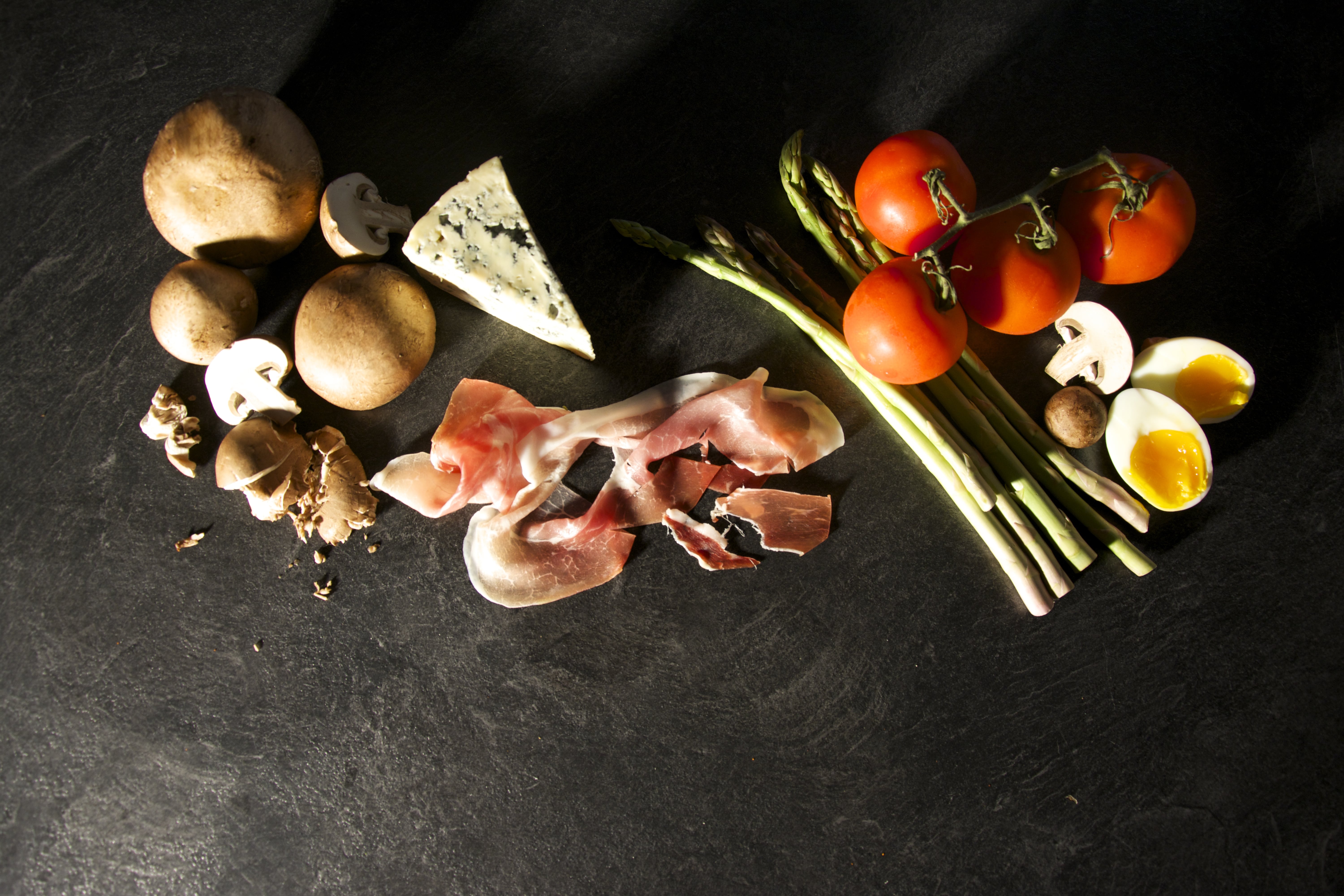Umami
BASAL FLAVOR: UMAMI
The magical word, that we consume our whole life, most of us without ever knowing it exists!
Umami is in everything we eat, it is a type of protein that makes everything delicious! The more umami a product has accumulated, the more delicious it is. Now this may sound strange as we usually associate protein with being savory. And if you were to extract Umami in it’s pure form, it would have sort of a sweet/savory, boiled mushroom broth kind of flavor. But a strawberry is a great example of umami richness, you know when you have that crazy delicious, sweet strawberry, that really good one…! Well you can thank umami for that. Even though of course the fructose (natural fruit sugar) is also part of that time stopping moment of deliciousness, in a way they go hand in hand.
The riper and/or more concentrated a food product is the more umami it will have. So dried and cured meats for example, are what I refer to in my classes as Umami-bombs. So when it comes to the food we eat, Umami is the Harry Potter of edibles, the golden child of which without him life as we know would end. BUT! There’s a big but here, no laughing (this is a serious matter)! Umami and wine DON’T MIX!! (Insert choked Emoji that for some reason has a blue forehead)
I know, that the two greatest things in life, Umami, and wine, are basically enemies…! What happens is that the Umami-rich product you have in your mouth will give the wine a metallic taste! And frankly in some cases make the whole combination just taste awful! The Umami-rich product can also wreak havoc on the general structure and balance of the wine, making it seem more tannic, more bitter, and that all the negative elements are enhanced by this now evil golden boy, Malfoy perhaps?
So in a way Umami is bipolar. Can’t live with it, can’t live without it. Now the next question you might be thinking; isn’t there umami in wine, since wine is a product made up of hundreds of super ripe grapes. Well the answer is yes, but the umami in wine doesn’t seem to give the foods we eat with it negative flavors, the wine got the short end of the stick on a one-way street in this instance.
Something I always point out is that you can change the food you’re eating as much as you want! You can add and subtract ingredients however you wish, whilst unless you’re a winemaker, you cannot change the wine. So, why not base all of your recipes on the wine! Instead of creating a dish and then trying (but mostly failing) to perfectly pair a wine to a dish that never took in to account that it’s partner was already wearing a blue suit with a pink shirt, you can’t show up in a burgundy dress and the try to add something to your dress that’ll make the match better…
To avoid so called Umami-bombs, here are the biggest traps; blue cheese (the actual mold specifically), charcuterie (dried and cured meats), asparagus, tomato, shellfish, and worst of all eggs! Eggs have an added terror; Sulphur, combined with the danger of Umami, eggs are truly the Lord Voldemort of this story. But if you’ve read any of my other tidbits, you can help these difficult ingredients meet wine more delicately by adding fat and salt! Fattiness, and saltiness will help you in any wine-conundrum. Or to be safe you can choose a wine with sweetness in it, wines with some sweetness to them are always a helpful way to meet difficult ingredients, whether they’re spicy, bitter, umami-rich or all of the above, sweeter is always a safer bet.
Umami was discovered and deemed to be the fifth Basal flavor, as the name may suggest by a Japanese professor of Tokyo Imperial University, but you may not guess when, 1908. It’s not until now it’s become part of the vocabulary of the western society, much do to burger chains, flavor enhancing powders (extracted Umami). So that’s Umami!
